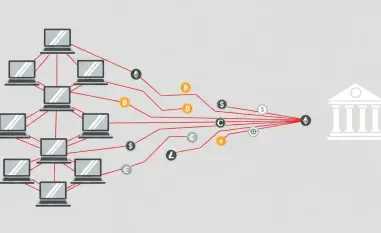As cybercriminals refine their attack strategies, ransomware incidents continue to pose significant challenges, reshaping the cybersecurity market landscape with escalating threats and economic consequences. The need for improved defense mechanisms and strategic innovations becomes essential. This market analysis offers a comprehensive understanding of the current dynamics and future developments essential for navigating the complexities of ransomware in today’s digital age.
Understanding the Evolution of Ransomware Attacks
Ransomware has evolved from sporadic threats into a sophisticated and dominant force in the cybersecurity industry. This change began with the proliferation of cryptocurrency, providing cybercriminals a means to demand and secure ransoms with ease, thereby escalating their activities. Over time, the technology used in ransomware attacks has advanced dramatically, with techniques now encompassing not only encryption methodologies but also multifaceted strategies to evade traditional defenses. This historical progression has reinforced the importance of preparing for increasingly sophisticated incursions, necessitating constant vigilance and adaptation in security practices.
Current Market Landscape and Dynamics
Complexity and Strategy Transformation in Ransomware
Today, ransomware threats exhibit remarkable complexity, with attackers utilizing advanced targeting methods that extend across various sectors. The use of phishing, along with the exploitation of security loopholes in expansive network infrastructures, demonstrates the nuanced strategies deployed. Healthcare is a notable example, where attackers continually exploit system weaknesses to obtain sensitive data, amplifying the stakes for cybersecurity defenses. Addressing these threats involves not only technological solutions but also broader efforts related to trust-building and regulatory compliance.
Economic Costs and Strategic Industry Adaptations
Ransomware’s economic impact is profound, with businesses facing significant financial burdens from both direct and indirect attack costs. This reality forces companies to reevaluate their cybersecurity investments and risk management frameworks. Organizations must transition from reactive defense measures to proactive risk mitigation strategies, incorporating sophisticated threat detection technologies and fostering inter-industry collaborations. There lies an opportunity for market innovation, yet this also translates into an urgent requirement for ongoing strategic oversight to navigate future fiscal challenges.
Regional Disparities and Strategic Planning
Varying technological infrastructures across regions shape how different markets experience, respond to, and recover from ransomware attacks. Disparities in exposure and resilience influence the overall effectiveness of cybersecurity measures. Moreover, regulatory differences add layers of complexity to the deployment of effective countermeasures. Tailoring cybersecurity strategies to align with regional nuances ensures that organizations optimize their defenses in accordance with localized requirements and challenges, enhancing both preventive and reactive capabilities.
Future Outlook and Innovations
The interplay of cybercriminal innovation and technological advancement continues to drive the evolution of ransomware. Predictive insights suggest a growing role for artificial intelligence in both cyber offense and defense, presenting fresh opportunities as well as risks. Meanwhile, regulatory frameworks are evolving to promote collective industry responses, aiming to standardize processes and enhance threat mitigation. Proactive technological developments in tandem with pertinent legislative actions promise to foster a cybersecurity environment capable of countering anticipated challenges effectively.
Strategies for Sustained Organizational Resilience
To effectively counter ransomware threats, organizations are urged to adopt strategic best practices emphasizing vigilant threat identification and agile risk assessment. Continuous evolution of cybersecurity architecture, alongside robust training programs for personnel, strengthens the defensive posture. Implementing rapid incident response protocols further insulates businesses from critical vulnerabilities. Adhering to these approaches ensures organizations remain prepared and resilient, safeguarding against the looming threats embedded in ransomware’s trajectory.
Reflections and Strategic Recommendations
Ransomware’s pervasive impact on cybersecurity markets has encapsulated substantial transformations in security approaches and industry dynamics. The findings highlight the imperative for continuous adaptation and strategic foresight. Emphasizing proactive learning, innovation, and collaborative efforts provides pathways for organizations to reinforce their cybersecurity frameworks. The future resilience of digital infrastructures hinges on the effective integration of these elements, ensuring robust protections in an ever-evolving threat landscape.













